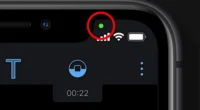
More than one-quarter of Child Trust Fund accounts worth an average of £1,911 are still unclaimed one year after maturing.
Child Trust Funds (CTFs) were tax-free savings products for children, introduced by the Labour Government in 2002 before being scrapped for new customers in early 2011.
The Government paid more than £2 billion into CTFs for 6.3 million children born during this period.
As more young people with a CTF turn 18, an increasing number can access their accounts.
However, more than a quarter of CTFs have remained untouched for a year or more after their owners turned 18, according to the National Audit Office.


Forgotten savings: A CTF is a long-term tax-free savings account for children born between 1 September 2002 and 2 January 2011, which they can access when they turn 18
Separate research has found that almost a fifth of British adults, rising to 36 per cent of those aged 18-34, believe they may have lost a CTF, or let one set up on behalf of children or grandchildren become dormant.
The research from Gretel, an online service which reconnects people with lost and dormant accounts, estimates that there is over £2.2 billion sitting in lost or dormant CTFs.
Myron Jobson, senior personal finance analyst at stockbroker Interactive Investor, said: ‘The NAO’s investigation into CTFs lays bare the high level of apathy for the account.
‘The NAO seemingly laments the fact that is nigh on impossible to establish how many people may have lost track of their investments in CTFs because of a lack of available data.
‘The fact remains that the onus is on parents or guardians and now adult children to trace a lost CTF.’
What are Child Trust Funds?
Like with today’s Junior Isa, the idea was to help parents and guardians put aside cash for their children to set them up for adulthood.
Parents and guardians were issued vouchers that they could then place with a CTF provider, normally a bank or building society.
This comprised two £250 vouchers, one when the child was born and one when they turned seven, or two £500 vouchers for families on low incomes.
If parents failed to place these vouchers with a CTF provider, the Government automatically put the money into one on the child’s behalf.


The National Audit Office found that CTFs are at risk of becoming forgotten or lost track of by account holders
Of the 6.2 million CTF accounts in total, 1.8 million of them were opened by HM Revenue & Customs in this way.
Laura Suter, head of personal finance at investment firm AJ Bell, said: ‘Many parents and children aren’t aware they even have the account, or don’t know who the money is with or how to track it down.
‘More than a quarter of CTF accounts were set up by the Government, because parents failed to do so within the 12-month window.
‘This highlights why so many are unclaimed – as the parents either weren’t aware or won’t remember that an account was even set up for their child, let alone where the money is now.’
£100 million CTF provider charges erode returns
There are also fears that many CTF providers are charging huge sums for managing CTFs, eating into the money available to account holders.
The National Audit Office estimates that CTF providers – including banks and building societies – could be earning collectively up to £100 million per year through charges on accounts.
Suter adds: ‘Many of these accounts have very high charges, meaning that all the time they go unclaimed providers are making huge sums that eat away at the capital.
‘The report estimates that CTF providers are taking £100 million a year from savers in charges on the accounts, a figure that will increase as the accounts rise in value.
‘That means on average charges of 1 per cent a year are being levied on the funds.’
How can you find a lost account?
People do not necessarily need their provider to trace where a CTF is held.
They will need to fill in an online form to ask HM Revenue & Customs where the account was originally opened – although they will need to create a Government Gateway User ID and password if they do not already have one.
Any parent looking for a CTF they set up will need the child’s Unique Reference Number, which can be found on the annual CTF statement, or their child’s National Insurance number.
If someone is looking for their own CTF they will need their National Insurance number to hand.
An easier way for those aged 16 to 18 to potentially find their account is through the charity Share Foundation.
Another option is to try Gretel, which reconnects people with lost and dormant accounts across all areas of financial services.


Young people and their parents can apply to HM Revenue & Customs for information about their Child Trust Fund online
It now claims to cover almost half of the CTF market.
What to do with CTF money
Once the CTF is tracked down, the next step is working out what do with the money.
Some may need it to help them combat the cost of living, while others may look to save or invest elsewhere.
‘Once you’ve tracked down the money you can work out what to do with it,’ says Suter.
‘For many people it will make sense to transfer it to a Junior Isa, where the charges will likely be lower and you’ll have a much bigger investment choice.
‘If you’re transferring the CTF you need to move over the entire sum of money to a Junior Isa, you can’t have both types of account open at once.
‘But helpfully the amount you transfer won’t count towards your annual Junior Isa limit.
‘This means that you can transfer the entire CTF into a Junior Isa and still add up to £9,000 to it in the same tax year.’
#bcaTable h3,#bcaTable p {margin: 0; padding: 0; border: 0; font-size: 100%; font: inherit; vertical-align: baseline;}
#bcaTable {font-family: Arial, ‘Helvetica Neue’, Helvetica, sans-serif; font-size:14px; line-height:120%; margin:0 0 20px 0; padding:0; border:0; display:block; clear:both;}
#bcaTable {width:636px; float:left; background-color:#f5f5f5}
#bcaTable .title {width:100%; background-color:#58004c}
#bcaTable .title h3 {color:#fff; font-size:16px; padding:7px 8px; font-weight:bold; background:none}
#bcaTable .item {display:block; float:left; margin-bottom:10px; border-bottom:1px solid #e3e3e3; margin:0; padding-bottom:0px; width:100%}
#bcaTable .item#last {border-bottom:0px solid #f5f5f5}
#bcaTable .copy {padding:7px 10px 7px 10px; display:block; font-size:14px}
#bcaTable a.mainLink {display:block; float:left; width:100%}
#bcaTable a.mainLink:hover {background-color:#E6E6E6; border-top:1px solid #e3e3e3; position:relative; top:-1px; margin-bottom:-1px}
#bcaTable a.mainLink:first-child:hover {border-top:1px solid #58004c;}
#bcaTable a .copy {text-decoration:none; color:#000; font-weight:normal}
#bcaTable .copy .red {text-decoration:none; color:#de2148; font-weight:bold}
#bcaTable .copy strong, #bcaTable .copy bold {font-weight:bold}
#bcaTable .footer {display:block; float:left; width:100%; background-color:#e3e3e3; margin-bottom:0}
#bcaTable .footer a {float:right; color:#58004c; font-weight:bold; text-decoration:none; margin:10px 18px 10px 10px}
#bcaTable .mainLink p {float:left; width:524px}
#bcaTable .mainLink .thumb span {display:block; float: left; padding:0; line-height:0}
#bcaTable .mainLink .thumb {float:left; width:112px }
#bcaTable .mainLink img {width:100%; height:auto; float;left} #bcaTable .article-text h3 {background-color:none; background:none; padding:0; margin-bottom: 0}
#bcaTable .footer span {display:inline-block!important;} @media (max-width: 670px) {
#bcaTable {width:100%}
#bcaTable .footer a {float:left; font-size:12px; }
#bcaTable .mainLink p {float:left; display:inline-block; width:85%}
#bcaTable .mainLink .thumb {width:15%} #bcaTable .mainLink .thumb span {padding:10px; display:block; float:left}
#bcaTable .mainLink .thumb img {display:block; float:left; }
#bcaTable .footer span img {width:6px!important; max-width:6px!important; height:auto; position: relative; top:4px; left:4px}
#bcaTable .footer span {display:inline-block!important; float:left} } @media (max-width: 425px) {
#bcaTable .mainLink {}
#bcaTable .mainLink p {float:left; display:inline-block; width:75%}
#bcaTable .mainLink .thumb {width:25%; display:block; float:left} } #bcaTable .dealFooter {display:block; float:left; width:100%; margin-top:5px; background-color:#efefef }
#bcaTable .footerText {font-size:10px; margin:10px 10px 10px 10px;}
THIS IS MONEY’S FIVE OF THE BEST CURRENT ACCOUNTS









